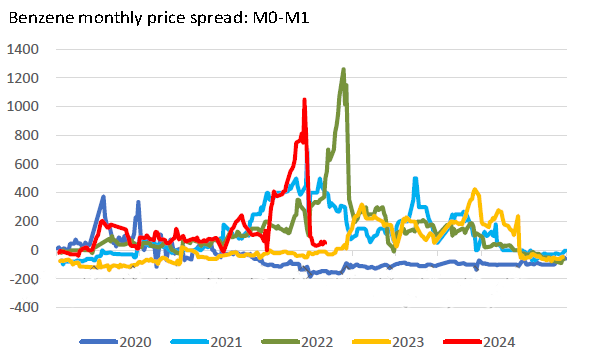Nylon 6 chip trading expands, a sign of bottoming out?
Starting this week (Jul 15-19), the trading volume of nylon 6 conventional spinning (CS) chips has gradually expanded, especially on Wednesday (Jul 17). Mainstream CS chip factories in regions such as Shanxi, Shandong, Hunan, Jiangsu, and Zhejiang have all experienced varying degrees of sales/production ratio surges, with daily sales reaching over a thousand or two thousand tons. Some factories have become reluctant to sell at previous low prices, while others have slightly raised prices by 50-100yuan/mt.
At the same time, following the increase in chip trading volume, polymer plants have also increased their purchasing efforts for CPL. In East China market, trading sentiment for CPL have improved significantly in the range of 12,400-12,450yuan/mt. Downstream buyers are actively making inquiries, and sellers do not feel evident sales pressure at the moment, exhibiting a cautious selling mindset as well.
Looking back at the recent price decline, the main bearish factors are as follows:
The first factor is the decline in benzene prices, as previously discussed. Due to tight benzene supply and the impact of capital behavior in late June, the significant price difference indicated a risk of a sharp decline in benzene prices. In the first half of July, the listed benzene price continuously decreased to 850yuan/mt, directly leading to a significant downward adjustment in CPL and chip prices.

The second is the commissioning of Luxi Chemical's new plants. Starting from June, new CPL and PA6 units in Luxi Chemical have been gradually put into operation. As of late July, with factors such as other raw materials not yet in operation and product testing, the new CPL plant's operating rate is maintained at 60%, while four sets of PA6 new units have already been put into production. The following two sets of unit may explore differentiated products, and the previous market impact of 200kt/year has been largely realized. Progress still needs to be monitored for potential future pressures, but with prices stabilizing this week, the short-term impact has weakened.
The third factor is the expectation of the off-season, as July and August are traditionally slow seasons for the textile and engineering plastics markets. Since late June and early July, there has indeed been a sense of lightening demand in some specifications of filament market. Mainstream modified plastic plants in July have also reported a slight decrease in chip usage compared to June.
The combination of these three factors has led to the price decline in the first half of the month. However, analysis indicates that at the current time, with benzene adjustments gradually settling and most of Luxi Chemical's new capacities are realized, along with a positive purchasing willingness despite a decrease in seasonal demand, and the absolute price dropping to a low point for the year, these factors are fermenting a signal for short-term stabilization and rebound in prices.
Can this upward trend be sustained?
Based on current understanding, downstream replenishment of chips has not been completed, and inventory levels remain at moderate to low levels, indicating continued purchasing potential in the short term. However, the current supply side is stable, especially with high operating rates of CPL plants and no news of production cuts. Therefore, it is unrealistic to expect a continuous upward trend in prices solely driven by speculative downstream buying, and more positive news developments would be needed.
- Top keywords
- Cotton Price
- Cotton Futures Price
- Cotton Futures
- CZCE
- PTA Futures Price
- Chemical Fiber
- Polyester Prices
- Wool price
- PTA Futures
- Shengze Silk
- China
- Yarn Price
- price
- China Textile City
- Fibre Price
- Benzene Price
- Cotton
- Index
- Cotton Index
- PTA
- fabric price
- NYMEX
- Top 10
- textile industry
- Spot Cotton
- Cotton Yarn
- Polyester Price
- Futures
- PTA Price
- cotton yarn price

